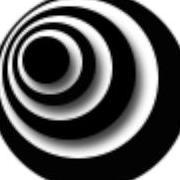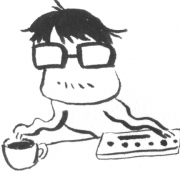Search the Community
Showing results for tags 'popsolver'.
-
what are exactly the pre-solve and post-solve input of popsolver ? there isn't any explanation about these input in the documentation?
-
Is it possible to have a mutual collision between Pop Solver, with POP Fluid, and an RBD Object ? Something like the Feedback Scale we have in Flip Solver. It's a basic Setup, I have a box, blasted the top edge, and an RBD Sphere in there, and I emmit Pop Fluid and I'm trying to achieve mutual collisions, so to make the sphere float on the liquid surface
-
Hello, Is there a way to slow down DOP particle simulation without changing liquid behavior too drastically? I made a liquid simulation with popfluid it looks exactly like I need but I need to slow it down to make it look like it was shot on Phantom camera (think of one of those fancy table tops from Marmalade as a reference:). I use standard 24 FPS and Time Scale on DOP is 1 substeps = 1, time scales on popfluid and popsolver inside DOP are 1 as well substeps on popsolver 1, 2. So to slow everything down I tried to half Time Scale on DOP but liquid behavior changed completely, when I try to do the same with time scales on solvers inside same thing is happening. So the question is is it possible to preserve liquid motion after changing time scale? Maybe unlock solvers, dive inside and change something there? Thanks. PS. i know that retime is other option probably most obvious, but unfortunately it doesn't look the way I need especially with collisions.
-
I want to make water from the hose. Like a fire truck, very strong and fast. I tried to use a popslover, but it didn't look goodon the colision side and it didn't speed up properly when I tried to use flip Solver. I tried to bring the location and speed of the particle to flip Solver but it didn't work. What should I do? I'd appreciate it if you could help me. thank you
-
Hi! This is me trying to understand the popSolver in houdini. What is the difference between this two inputs and why they are both wired like that by the shelf (Check the attached image) The particles seems to do the same thing if I rewired as I showed in the second network and they don't do anything at all with the 3rd one. Also why is the wire dotted between the popsource and the popstream, They only work together is both inputs (pre and post) are wired like that. Thanks and pardon my English :$
- 4 replies
-
- post-solver
- popsolver
-
(and 3 more)
Tagged with:
-
Hoping someone can help me with this...feels like it should be easy-ish, but can't seem to figure it out. I've got no problem controlling the @active attr and passing it into a DOPNet/rigidbodysolver. How do you do pass @active to a POPSolvers and PyroSolvers? I want to take the same animated pieces from my RBD sim and have a particle sim and/or a pyro sim triggered by the same timing. For a PopSolver, the best I've come up with is a painful for-each setup based on fragment age and group culling, so basically cheating it all before the PopSolver gets the geo. I could probably modify it to have the for-each loop eval for @active as the first step, but that's still avoiding the solvers. For Pyro, I was working on a similar system with clusters but when I scaled it from my prototype to my project geo, it basically wrecked my machine. I've attached a simple file with a staggered shattering of a sphere and all the hooks for both a PopSolver and a PyroSolver. Is there a more straightforward way to do this? -- mC Active_To_Pop_Pyro_01.hiplc
- 4 replies
-
- popsolver
- pyrosolver
-
(and 1 more)
Tagged with:
-
I'm trying to get good physical interaction between a baked RBD geo and a particle system and the particles seem like they are either all stuck or all slide with nothing in between? I'm bringing in the RBD as a static object collider, with deforming geometry turn on, and set the collisions to Use Surface Collisions (the green guide one). The particles collide but for the most part they stick really harshly even when friction is turned down all the way. If I go onto the pop solver and in the collision behaviour tab, set the response to slide.. they slide but then it looks like its on ice and the friction controls are disabled. Any ideas how to get a good setup? I'm trying to make something like rock debris on a cracking ground surface. so there should be some tumble and roll but eventually come to a stop, maybe a slight bit of bounce but not really too "bouncy" either.
-
- physical properties
- rbd
-
(and 3 more)
Tagged with:
-
what is meaning of rehome particle? I've read help but still cannot understand. I know we usually set "leftmost" option with flip-solver. but I don't know why. And what is "new particle generator" option actually do? when I tested it, only thing I need is a null node (as replacement of source pop). it hasn't to be set as new particle generator. thank you.




